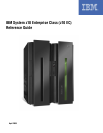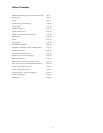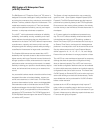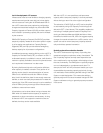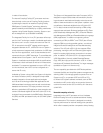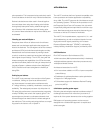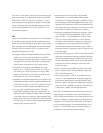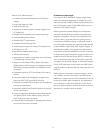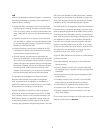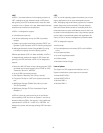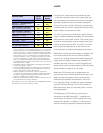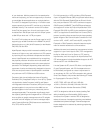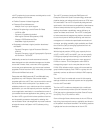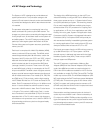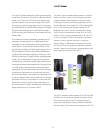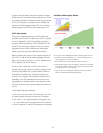The z10 EC is also able to exploit numerous operating sys-
tems concurrently on a single server, these include z/OS,
z/VM, z/VSE, z/TPF, TPF and Linux for System z. These
operating systems are designed to support existing appli-
cation investments without anticipated change and help
you realize the benefi ts of the z10 EC. System z10 – the
new business equation.
z/OS
August 5, 2008, IBM announced z/OS V1.10. This release
of the z/OS operating system builds on leadership capa-
bilities, enhances time-tested technologies, and leverages
deep synergies with the IBM System z10 and IBM System
Storage
™
family of products. z/OS V1.10 supports new
capabilities designed to provide:
• Storage scalability. Extended Address Volumes (EAVs)
enable you to defi ne volumes as large as 223 GB to
relieve storage constraints and help you simplify storage
management by providing the ability to manage fewer,
large volumes as opposed to many small volumes.
• Application and data serving scalability. Up to 64
engines, up to 1.5 TB per server with up to 1.0 TB of
real memory per LPAR, and support for large (1 MB)
pages on the System z10 can help provide scale and
performance for your critical workloads.
• Intelligent and optimized dispatching of workloads. Hip-
erDispatch can help provide increased scalability and
performance of higher n-way z10 EC systems by improv-
ing the way workload is dispatched within the server.
• Low-cost, high-availability disk solution. The Basic
HyperSwap
™
capability (enabled by TotalStorage
®
Pro-
ductivity Center for Replication Basic Edition for System
z) provides a low-cost, single-site, high-availability disk
solution which allows the confi guration of disk replication
services using an intuitive browser-based graphical user
interface (GUI) served from z/OS.
• Improved total cost of ownership. zIIP-Assisted
HiperSockets for Large Messages, IBM Scalable
Architecture for Financial Reporting
™
enabled for zIIP (a
service offering of IBM Global Business Services), zIIP-
Assisted z/OS Global Mirror (XRC), and additional z/OS
XML System Services exploitation of zIIP and zAAP help
make these workloads more attractive on System z.
• Improved management of temporary processor capac-
ity. A Capacity Provisioning Manager, which is avail-
able on z/OS V1.10, and available on z/OS V1.9 with
PTFs, can monitor z/OS systems on z10 EC servers.
Activation and deactivation of temporary capacity can
be suggested or performed automatically based on
user-defi ned schedules and workload criteria. RMF
™
or
equivalent function is required to use the Capacity Provi-
sioning Manager.
• Improved network security. z/OS Communications Server
introduces new defensive fi ltering capability. Defensive
fi lters are evaluated ahead of confi gured IP fi lters, and
can be created dynamically, which can provide added
protection and minimal disruption of services in the
event of an attack.
• z/OS V1.10 also supports RSA key, ISO Format-3 PIN
block, 13-Digit through 19-Digit PANdata, secure key
AES, and SHA algorithms.
• Improved productivity. z/OS V1.10 provides improve-
ments in or new capabilities for: simplifying diagnosis
and problem determination; expanded Health Check
Services; network and security management; automatic
dump and re-IPL capability; as well as overall z/OS, I/O
confi guration, sysplex, and storage operations
With z/OS 1.9, IBM delivers functionality that continues to
solidify System z leadership as the premier data server.
z/OS 1.9 offers enhancements in the areas of security, net-
working, scalability, availability, application development,
integration, and improved economics with more exploita-
tion for specialty engines. A foundational element of the
platform — the z/OS tight interaction with the System z
hardware and its high level of system integrity.
7



